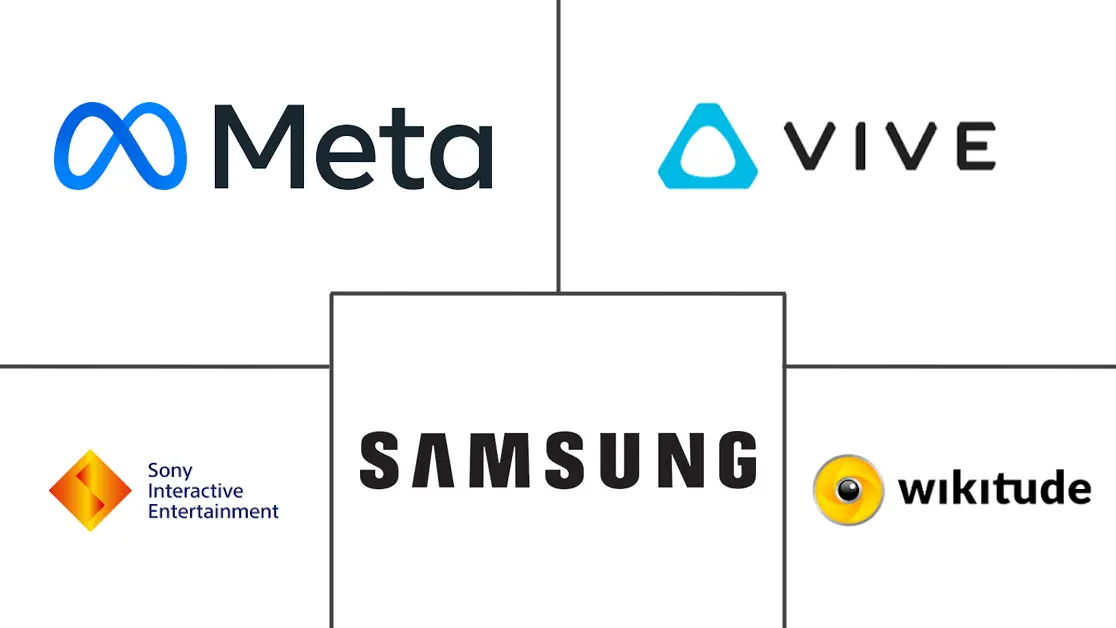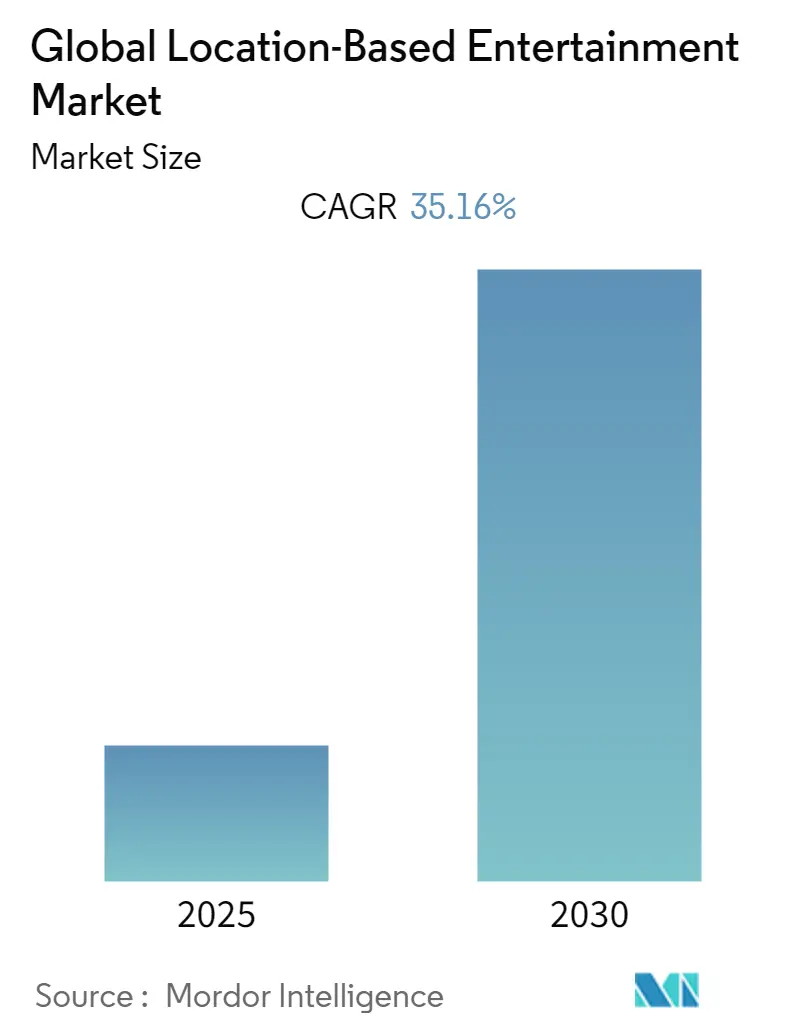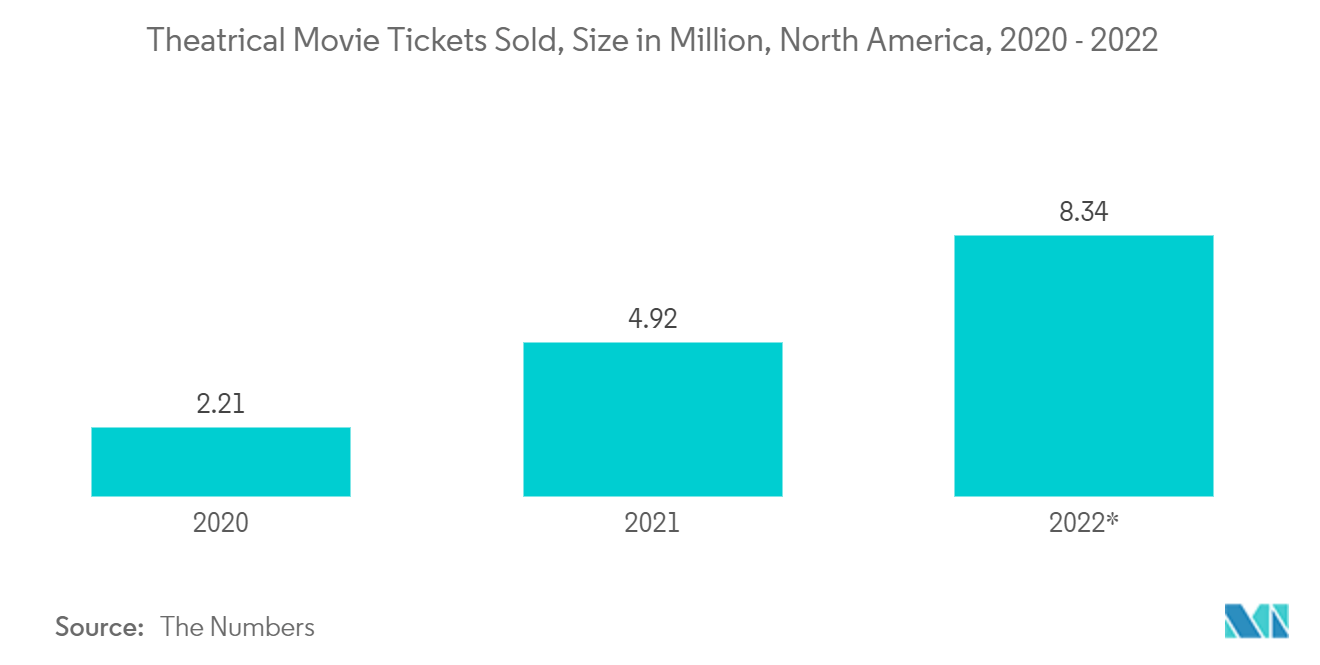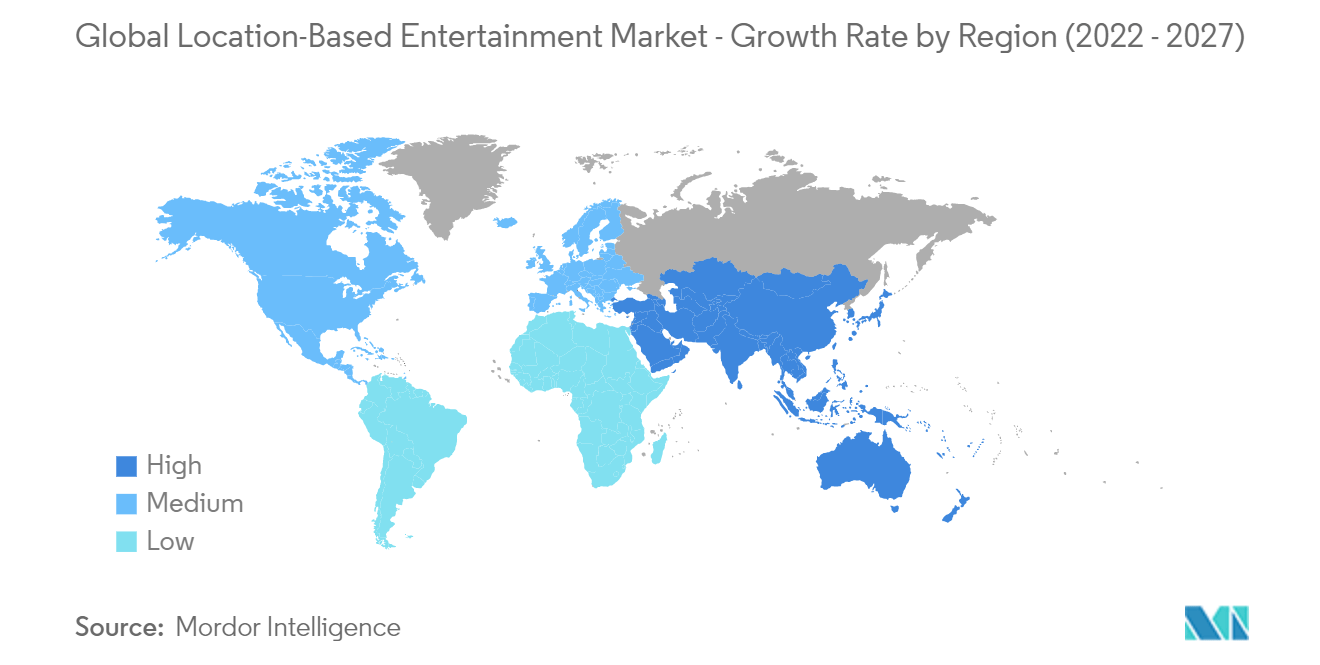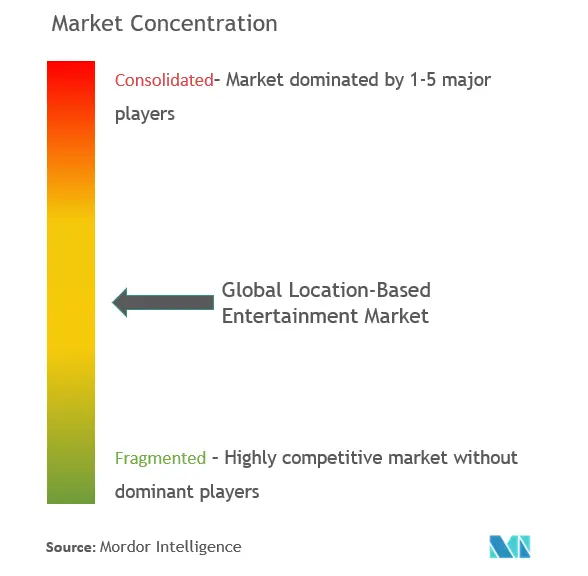Location-Based Entertainment Market Analysis
The Global Location-Based Entertainment Market is expected to register a CAGR of 35.16% during the forecast period.
- The gaming business is going through a paradigm transition, and the established players in the market are eager to pursue technology-driven projects. Customers are thought to be embracing virtual reality (VR) in large numbers, particularly considering the industry's focus on multiplayer games. The trend, in turn, drives smaller businesses to participate in the LBE sector, fueling the market's expansion.
- Moreover, several governments are supporting location-based entertainment. For instance, the ITA report mentioned that the United States government supports location-based entertainment (LBE) and themed attractions by exporting items to construct amusement parks and associated interests. Support for various service models, including franchise, public, and private experience-driven activities, is part of this. Individuals, businesses, and consortiums with at least 51% U.S. content may ask for international assistance for LBE services.
- Significant players, such as Reality Labs in Meta, HTC VIVE, Sony Interactive Environment, etc., are investing much in research and development to introduce simulation technologies. Due to customers' evolving preferences for out-of-home entertainment, businesses are looking into several initiatives to offer more engaging ways to use shared social spaces and integrate people.
- The rising population spending on outdoor activities and the use of 3D technology at entertainment locations offering a realistic experience are the primary drivers of the market. The high expense of creating the content makes it a difficult challenge for market participants.
- The COVID-19 pandemic outbreak has negatively impacted market conditions. As part of the lockdowns implemented in many countries to prevent the spread of coronavirus, several LBE facilities, such as amusement parks, theme parks, arcades, and theatres, were temporarily shuttered. To gain traction and draw a sizable audience in the post-pandemic era, these LBE centers can now make the most of their limited resources by engaging customers, providing them with compelling reasons to return, educating customers about best practices to reduce health risks, and implementing data analytics to address customer needs.
Location-Based Entertainment Market Trends
Cinemas to Hold a Significant Share
- Box office revenue is anticipated to increase when movies return to theatres in 2022, although recovering pre-pandemic levels will be challenging owing to new release schedules meant to prevent theatre closures. It is predicted that the symbiotic relationship between offering high-value movies to streaming services more quickly and rising costs would increase costs and delay profitability for new entrants while easing the post-pandemic growth landing.
- While, the entertainment industry includes segments including the movie and live events industry, sports, gaming, and theme parks and amusement parks. Virtual and augmented reality may be used differently in each of these divisions.
- Further, a broadband internet connection can deliver the majority of alternative material, such as TV shows or sports, to cinemas. However, fewer than half of American movie theatres have displays that can broadcast content from the internet. In truth, the majority of cinemas in the United States still rely on shipments of actual hard drives holding films, which they subsequently load into their computers, or on downloading data from satellites. Industry insiders anticipate that movie theatres will use internet streaming more and more.
- The Motion Picture Association's annual THEME report states that global combined ticket sales in 2021 increased by 81 percent over 2020 (USD 11.8 billion) to USD 21.3 billion. However, they are behind 2019's USD 42.3 billion by 50%.
Asia Pacific is Expected to Have Significant Growth
- The Asia Pacific region is predicted to have the fastest CAGR. As opposed to other forms of entertainment, people in the Asia Pacific region are starting to favor outdoor activities for recreation.
- A number of international VR hardware and software vendors are based in the Asia Pacific, which is encouraging the expansion of the local market. Another factor anticipated to aid in expanding the regional market is the growing number of VR game players in China. Due to the availability of several VR hardware and software suppliers, as well as the rising popularity of outdoor leisure activities relative to other location-based entertainment kinds.
- Additionally, the market development in the APAC region is being boosted by the growing popularity of VR-based games in nations like Japan, China, South Korea, and India. In order to boost regional prosperity, numerous governments are also supporting the use of LBE technology at well-known tourist destinations. This is encouraging market expansion in the Asia Pacific.
- For instance, In March 2022, the Research & Entrepreneurship Park of IIT Bhubaneswar (IIT BBS-REP) hosted an Open Challenge Program (OCP) in AR-VR in collaboration with Software Technology Parks of India (STPI), the Ministry of Micro, Small and Medium Enterprises (MSME), the Government of Odisha, Start-up Odisha, and the Ministry of Electronics and Information Technology (MeitY), the Government of India. Open Challenge Program (OCP) aims to choose up to 20 of the top entries created and performed by start-ups actively engaged in AR-VR-related research, development, and application activities.
- Meanwhile, North America dominates the global market and contributes the most revenue. Increased adaptability to innovative technologies is linked to a growing customer base for LBE technology, and the rising adoption of location-based VR contributes to regional market expansion.
- Additionally, the existence of major suppliers in North America, the expansion of the media and entertainment sectors, and the increasing efficacy of location-based VR in gaming contribute to market domination. Therefore, in the near future, these characteristics will generate a healthy market demand for location-based entertainment in the region.
Location-Based Entertainment Industry Overview
The global location-based entertainment market is moderately consolidated and has a few significant players. A few of the key companies currently hold a large portion of the market, such as Oculus by Meta, HTC VIVE, Samsung Electronics, Sony Interactive Entertainment, Wikitude, etc. These dominant firms are growing their consumer bases internationally. These companies are advancing technologies, such as AR, VR, etc., to raise their market share and profitability.
- October 2021 - HTC VIVE announced VIVE Flow, a pair of glasses that can take its users everywhere they need. VIVE Flow, created with comfort and portability in mind, enables users to find moments of peace and well-being throughout the day. This includes using apps like TRIPP for meditation 2.0, going for a walk, watching TV or movies on their own personal, cinema-sized VR screen, challenging their brains with brain training apps, and collaborating and socializing with coworkers and friends on VIVE Sync.
- July 2021 - To create a proof-of-concept immersive location-based Harry Potter VR experience, Chaos at Hogwarts, AT&T partnered with Warner Bros., Ericsson, Qualcomm, Dreamscape, Nvidia, and Wevr. This proof-of-concept shows how 5G may improve the following user-generated experiences. The current architecture may be changed to one that is more pleasant for spectators, more effective for artists, and more efficient for venue operators by utilizing the high output and low latency properties of 5G in combination with edge cloud mixed reality processing.
Location-Based Entertainment Market Leaders
-
Meta
-
HTC
-
Samsung Electronics Co., Ltd.
-
Sony Interactive Entertainment Inc.
-
Wikitude
- *Disclaimer: Major Players sorted in no particular order
Location-Based Entertainment Market News
- March 2022 - An agreement to acquire Haven Entertainment Studios Inc., a development firm with headquarters in Montreal, was announced by Sony Interactive Entertainment LLC (SIE). With this acquisition, Haven will be able to fully use the PS5's ability to build new worlds that engage gamers and enable them to interact in interesting ways.
- December 2021 - Valkyrie Entertainment, a Seattle-based producer of video games, has announced an agreement to be acquired by Sony Interactive Entertainment. The development of key PlayStation Studios franchises that support the creation of PlayStation Studios Exclusive Games will be aided by Valkyrie Entertainment, the 17th company to join PlayStation Studios.
Location-Based Entertainment Industry Segmentation
The Global Location-Based Entertainment Market is Segmented By Type (Hardware, Software), By Application (Arcade, Theme Parks, Cinemas), and Geography.
| By Type | Hardware (Headsets) |
| Software | |
| By Application | Arcades |
| Theme Parks | |
| Cinemas | |
| By Geography | United States |
| Europe | |
| China | |
| Rest of the World |
Location-Based Entertainment Market Research FAQs
What is the current Global Location-Based Entertainment Market size?
The Global Location-Based Entertainment Market is projected to register a CAGR of 35.16% during the forecast period (2025-2030)
Who are the key players in Global Location-Based Entertainment Market?
Meta, HTC, Samsung Electronics Co., Ltd., Sony Interactive Entertainment Inc. and Wikitude are the major companies operating in the Global Location-Based Entertainment Market.
Which is the fastest growing region in Global Location-Based Entertainment Market?
Asia-Pacific is estimated to grow at the highest CAGR over the forecast period (2025-2030).
Which region has the biggest share in Global Location-Based Entertainment Market?
In 2025, the North America accounts for the largest market share in Global Location-Based Entertainment Market.
What years does this Global Location-Based Entertainment Market cover?
The report covers the Global Location-Based Entertainment Market historical market size for years: 2019, 2020, 2021, 2022, 2023 and 2024. The report also forecasts the Global Location-Based Entertainment Market size for years: 2025, 2026, 2027, 2028, 2029 and 2030.
Our Best Selling Reports
Global Location-Based Entertainment Industry Report
Statistics for the 2025 Global Location-Based Entertainment market share, size and revenue growth rate, created by Mordor Intelligence™ Industry Reports. Global Location-Based Entertainment analysis includes a market forecast outlook for 2025 to 2030 and historical overview. Get a sample of this industry analysis as a free report PDF download.

